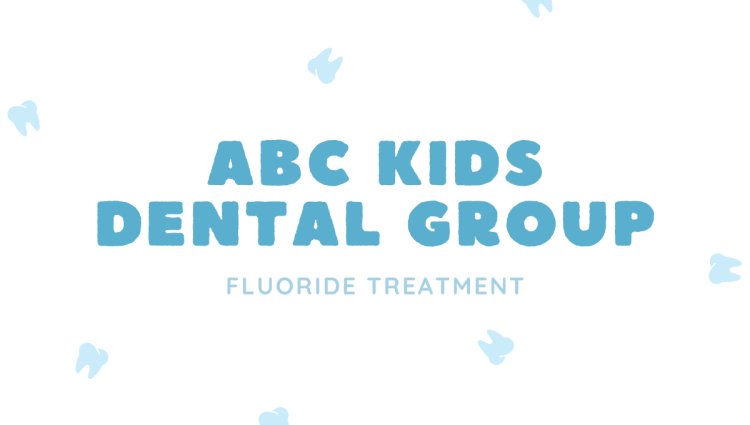Fluoride treatment | Benefits, side effects, and more
Fluoride treatment Over the past 70 years, the majority of the water that is pumped into taps in America has contained tiny amounts of fluoride, which has helped to slow tooth decay.

Everything you must be aware of about the fluoride treatment
Fluoride treatment - Over the past 70 years, the majority of the water that is pumped into taps in America has contained tiny amounts of fluoride, which has helped to slow tooth decay. It is the Centers for Disease Control and Prevention (CDC) claims that fluoridated water has decreased tooth decay by 25 percent.
The fluoride treatment may provide greater benefits for protecting teeth. They can be beneficial for those who are at risk of decay, but they may not be suitable for everyone.
This article will look at the advantages and consequences of fluoride and treatment, and treatment guidelines.
What is the purpose of fluoride treatment?
Treatments for fluoride are usually professional procedures that have a large amount of fluoride. A dental hygienist or dentist will apply on a person's teeth in order to enhance health and decrease the chance of developing cavities. The in-office treatments can come in form of liquid such as gel, foam, or varnish.
There are also high-concentration fluoride treatment options that patients can apply at home, but only with the guidance of a dentist.
The fluoride used by dentists to treat patients is comparable to the fluoride found in toothpaste. However, the treatment is more doses and could bring more benefits in a shorter time.
The benefits of fluoride as well as treatments with fluoride
The fluoride mineral has many benefits for teeth:
It aids the body in better-utilizing minerals, like calcium and phosphate. The teeth absorb these minerals in order to strengthen weak tooth enamel.
It is incorporated into the tooth structure as teeth develop to improve the strength of the enamel of teeth, which makes them less prone to decay and bacteria throughout the rest of their lives.
It can slow or even reverse the formation of cavities by attacking the bacteria that cause cavities.
If taken in conjunction when taken together, these benefits can contribute to
- Reduce the risk of developing cavities.
- Reduce the growth of cavities.
- reduce the need for costly dental procedures
- extend the life of baby teeth
- lessen both the time spent and the cost the patient spends at the dentist
By preventing the formation of cavities and slowing the development of bacteria fluoride treatment can also:
- help prevent gum infections from developing.
- Reduce tooth discomfort
- Prevent the premature loss of teeth
Fluoride treatments can enhance oral health as per the World Health Organization (WHO) Trusted Source is a significant indicator of overall wellness. Insufficient oral health can trigger various other health issues, such as cardiovascular disease.
The negative side effects of fluoride
Natural health advocates have expressed concerns about fluoride in large doses. They have also argued that fluoride isn't safe for children and that fluoridated water could be harmful.
It is, however, not true about fluoride-based treatments and fluoridated drinking water cause many harms, though certain people might experience negative effects, which include;
Tooth discoloration
The most frequent consequence of fluoride in tooth discoloration.
The condition of fluorosis results in white streaks and other dental discoloration. It occurs when a child is exposed to excessive amounts of fluoride when their adult and baby teeth are growing under the gums. Fluorosis can be diagnosed in children from birth until eight years of age.
It is more prevalent among young children who drink too much fluoride, whether because they are taking fluoride supplements, or take toothpaste in their mouths.
The United States Public Health Service Trusted Source has established guidelines on how much fluoride drinking water in the community should have to reduce the risk of tooth decay and lower the chance of developing dental fluorosis. The current limit is 0.7 milligrams of fluoride for each Liter (mg/l) in water.
Experts advise the use of fluoride toothpaste for all children. young to swallow the toothpaste out by themselves utilize fluoride-based toothpaste.
It is recommended that the American Academy of Pediatric Dentistry (AAPD) suggests that caregivers or parents use only a tiny quantity of toothpaste that is fluoridated at the time the first tooth of a child is erupting. This helps protect the teeth of children from decay but doesn't expose them to fluorosis in the event that the child accidentally consumes toothpaste.
Allergies or irritation
An individual may experience an allergic reaction when exposed to fluoride or have skin irritations, although the reactions are extremely rare.
Effects of toxic substances
Fluoride may be harmful when used improperly or in very large doses. But, this isn't common.
The professional-grade fluoride varnish for children younger than 6 years old. The fluoride varnish is the most preferred option for infants because they are more likely to consume gels or foams that can trigger vomiting and nausea.
How effective is the fluoride treatment?
A large amount of evidence from randomized controlled trials, the gold standard in scientific research, has confirmed the advantages of applying topical fluoride treatments to the prevention of decay.
A systematic review has revealed that treatments with fluoride, such as varnishes made from fluoride, have a significant effect in preventing the formation of cavities in permanent and primary teeth.
What's Your Reaction?























